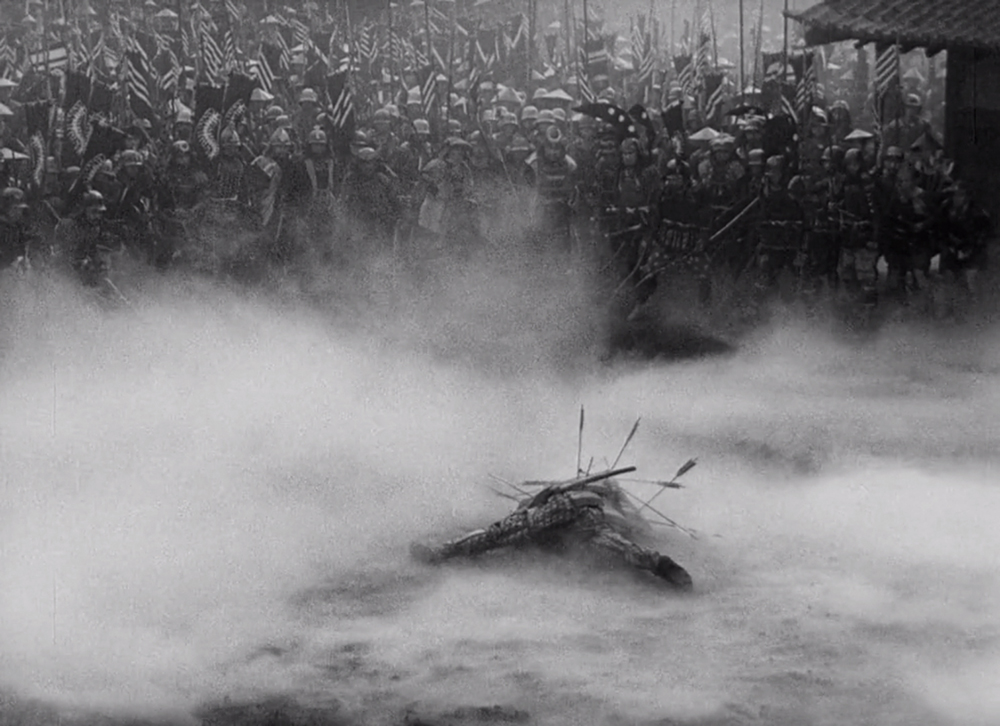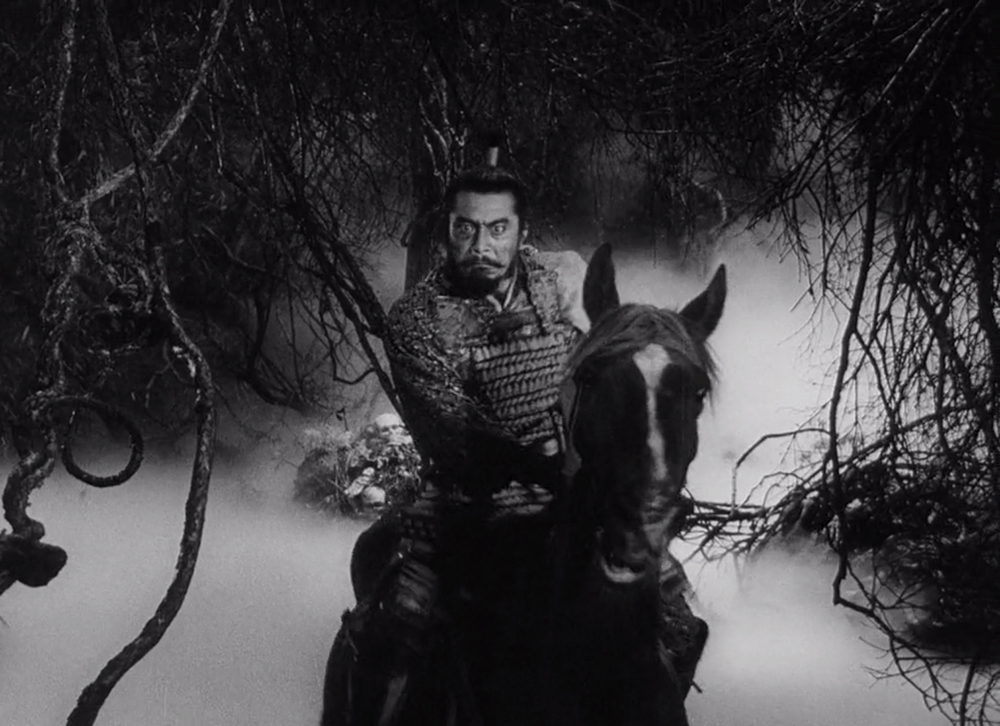VOL.45, NO. 2
Spectres of Film Adaptation: A Hauntology of Relational Hybridity
Saviour Catania
“What does it mean to follow a ghost? And what if this came down to being followed by it, always, persecuted perhaps by the very chase we are leading?”
- Jacques Derrida
Jacques Derrida’s trenchant reflections on Hamlet as a Shakespearean psychic detective wrestling with his paternal phantom could be profitably appropriated to illuminate the parallel trajectory of the film adaptor contending with the spectre of ancestral authorship. Like Hamlet, in fact, the film adaptor is a haunted haunter whose aesthetic stalking of the Other transmutes him/her into a doppelgänger of Harold Bloom’s spectralized poet who likewise struggles to deflect influential textual wraiths from constricting his/her creativity, thereby achieving “positive apophrades” (142). Being anything but the slavish imitator of pre-structuralist adaptation theory, the film adaptor embarks on the Bloomian poet’s undertaking of compelling inspiring spirits to “return in our colors, and speak … in our voices, at least in part, at least in moments” (141). Nor is the film adaptor, however, the totally independent creator of post-structuralist adaptation studies. True, in fact, to what Derrida states in Ken McMullen’s 1983 film Ghost Dance, that “cinema is the art of ghosts, a battle of phantoms,” the filmmaker as adaptor constantly grapples with the umbilical thread that intertwines him/her with the creative undead. Adaptation is aesthetically haunted, and no eclipsing of what Robert Stam calls its “clear point of origin” (31) can exorcize every trace of its spectral genesis.
Spectrality is the soul of adaptation, for the latter derives its being not only from a source text but, just as crucially, from a myriad of influences that can include, and even transcend, the multiplicity of literary and/or visual interpretations that such a source could have already generated. As Linda Hutcheon rightly intuits, adaptations can be compared to Richard Dawkins’s hypothetical “memes [or] units of cultural transmission” that evolve by being in “constant mutation” (176-77). Adaptations create in fact contiguous strata of existence, for like the Borgesian forking paths of Ts’ui Pên’s garden, they overlap and spiral backwards and sideways, thereby leaving in their mutating wake intertextual and/or transcultural shades of the spectral sparks that initially inspire them. No ghost laying is possible in this hauntology of sources. Hence the critical validity of the comparative analysis in studies of film adaptation. Worth citing here is David L. Kranz and Nancy C. Mellerski’s astute admonition that without “the relational heart [of] the comparative method in analyses of adaptations … the field itself [would] dissolve into undifferentiated film studies” (5). But what such comparative studies should more fruitfully dissect is the relational hybridity of a mutating hauntedness. For this is what ultimately distinguishes adaptation as adaptation, the interrelated hybridity of the “spectropoetics” (30), to use Helen J. Swift’s term, of hypotexts refracting into hypertextual shadows of their ghostly selves.
Akira Kurosawa’s Kumonosu-jo is a classic case in point, for it filters its invoked Macbeth ghosts through an interacting prism of intertextual and transcultural hybridity. Consider, for instance, how Kurosawa, inspired by Kuniyoshi’s celebrated musha-e or warrior painting of Kazumitsu’s death by arrows, interpolates for Washizu (Macbeth) a similar demise that differs radically from that of the appropriated woodblock representation by what Richard Marienstras labels its “hérisson” (35) or hedgehog-like depiction of the arrow-studded samurai dying in a crawling position.

But Washizu as spiky creature radiates with Shakespearean significance, for he looms as an intertextual reflection of “the fretful porpentine” (1.5.20) haunting Hamlet’s purgatorial phantom. The stunning effect is of a mutating hybridity of wraiths. But what is crucially decisive for Kumonosu-jo as adaptation is that its transcultural/intertextual wraiths interrelate with those within Macbeth. Significantly, intimations of the porcupine principle in Macbeth’s nature manifest when his body hair unnervingly bristles at the inception of Duncan's murder: “… why do I yield to that suggestion / Whose horrid image doth unfix my hair?” (1.3.134-35). Again, Washizu’s interpolated arrow-death reverberates with echoes of Macbeth’s “yellow leaf” vision of his stricken self (5.3.23) for, since these arrows are of arboreal origin, they signify Washizu’s analogous descent down the Shakespearean Chain of Being into what Serge Chauvin terms Kurosawa’s “homme-forêt” (35). The spectral parallel is deadly accurate, for Kurosawa’s withering of the wooded Washizu, just like Shakespeare’s shriveling of Macbeth, tragically reverses the vernal promise Duncan seeds in his friend: “I have begun to plant thee, and will labour / To make thee full of growing” (1.4.28-29). Haunting Kurosawa’s interpolated arrow-death sequence, with its suggestion of Washizu’s sylvan decadence, is Macbeth’s spirit distilled to a falling blossom. In Derridean/Bakhtinian terms, Kurosawa’s is a hybridity pivoted on relational spectrality. For what animates Washizu as a mutated Macbeth is paradoxically Macbeth’s wraith.
Consider, as a final example, Washizu’s interpolated galloping through the foggy Cobweb Forest, a misty version of Birnam Wood whose abstracted whiteness Kurosawa appropriates from Tohaku’s “Pine Forest” tableaux depicted in the suiboku-ga style of ink monochrome painting. Once again, Kurosawa interpolates to recreate, for his film’s misty texture becomes an elemental gateway through which Macbeth’s restless spectre transmutes his nihilistic realization that “Life’s but a walking shadow” (5.5.24) into the mist drifting about Washizu, its (in)substantiality hinting at his equally vacuous victory. It is through Tohaku that Kurosawa opens Washizu’s path into Macbeth’s relational heart where, as in his forest of fog, “nothing is, but what is not” (1.3.142). Kurosawa excels as a film adaptor because, like Washizu bolting in and out of his murky hell, he breaks out of Macbeth to break into it again.

This antithetical movement is crucial to any adaptation process. For without mutations, adaptation is not adaptation. Nor is it adaptation without spectral relations. Adaptation is a realm of the aesthetic undead, and the adaptor must master Charon’s skill to navigate its mutating maelstrom’s hybrid depths. Whether adaptation creates from the inside out and/or the outside in, its raison d’être remains the same: that of morphing its inspiring spectral spark into its furthest Ovidian reach of transcending death forever.
Works Cited
Bloom, Harold. The Anxiety of Influence: A Theory of Poetry. Oxford: Oxford UP, 1975. Print.
Chauvin, Serge. “Le Labyrinthe et les nuées: les espaces aberrants de Kurosawa.” Dorval 31-35.
Derrida, Jacques. Specters of Marx: The State of the Debt, the Work of Mourning, and the New International. Trans. Peggy Kamuf. New York: Routledge, 1994. 10. Print.
Dorval, Patricia, ed. Shakespeare et le Cinéma. Paris: Société Française Shakespeare, 1998. Print.
Griffiths, Kate, and David Evans, eds. Haunting Presences: Ghosts in French Literature and Culture. Cardiff: U of Wales P, 2009. Print.
Hutcheon, Linda. A Theory of Adaptation. New York: Routledge, 2006. Print.
Kranz, David L., and Nancy C. Mellerski. “Introduction.” In/Fidelity: Essays on— Film Adaptation. Ed. Kranz and Mellerski. Newcastle: Cambridge Scholars, 2008. 1-11. Print.
Marienstras, Richard. “La Forêt et le Rite (Le Château de l’Araignée).” Positif 225 (1979): 33-35. Print.
Shakespeare, William. Hamlet. Ed. Harold Jenkins. Surrey: Methuen, 1982. Print.
— — —. Macbeth. Ed. Kenneth Muir. London: Methuen, 1973. Print.
Stam, Robert. “Introduction: The Theory of Adaptation.” Literature and Film: A Guide to the Theory and Practice of Film Adaptation. Ed. Stam and Alessandra Raengo. Oxford: Blackwell, 2005. 1-52. Print.
Swift, Helen J. “Haunting Text and Image: Having it out with Misogynistic Authorities in the Late Medieval querelle des femmes.” Griffiths and Evans 29-42.